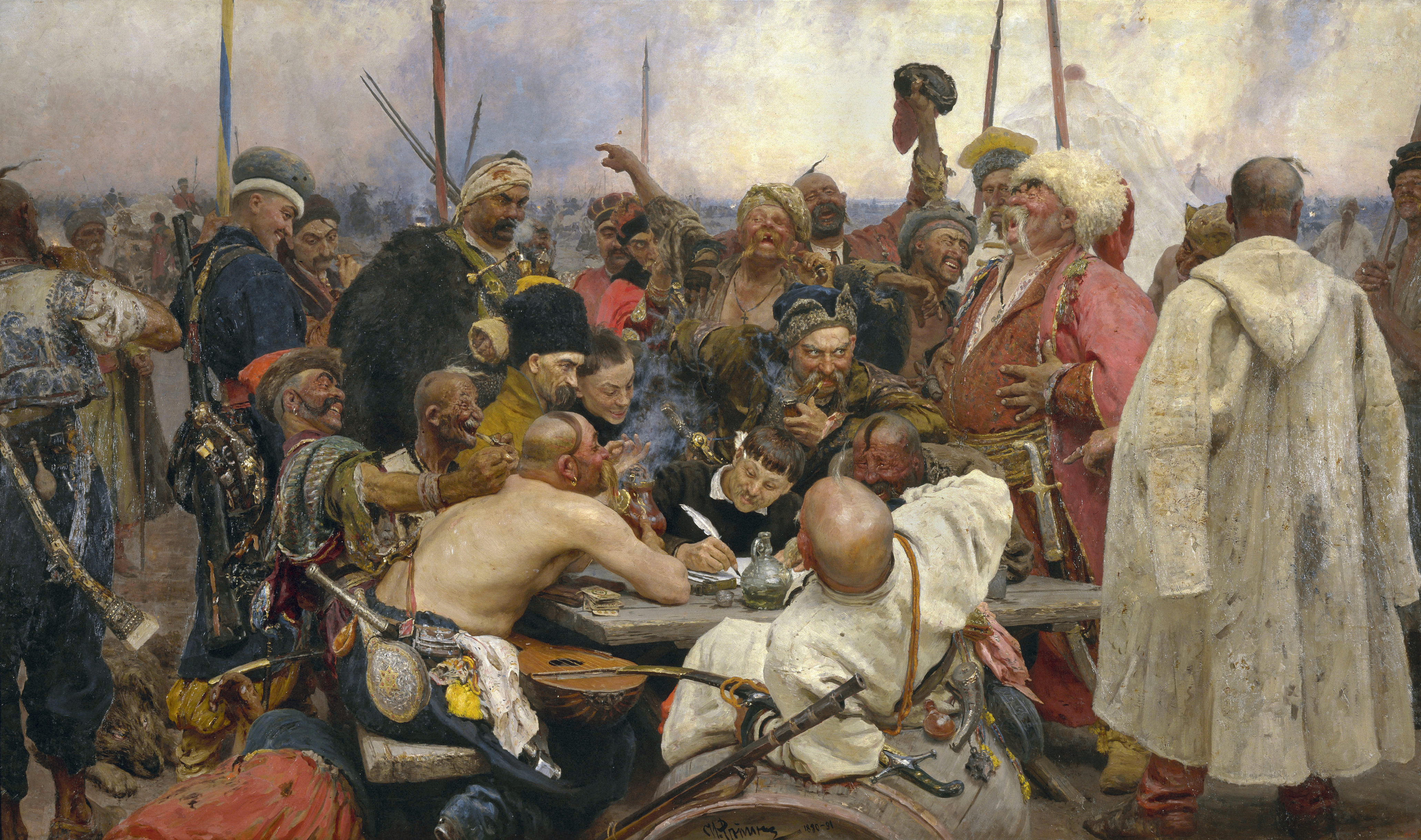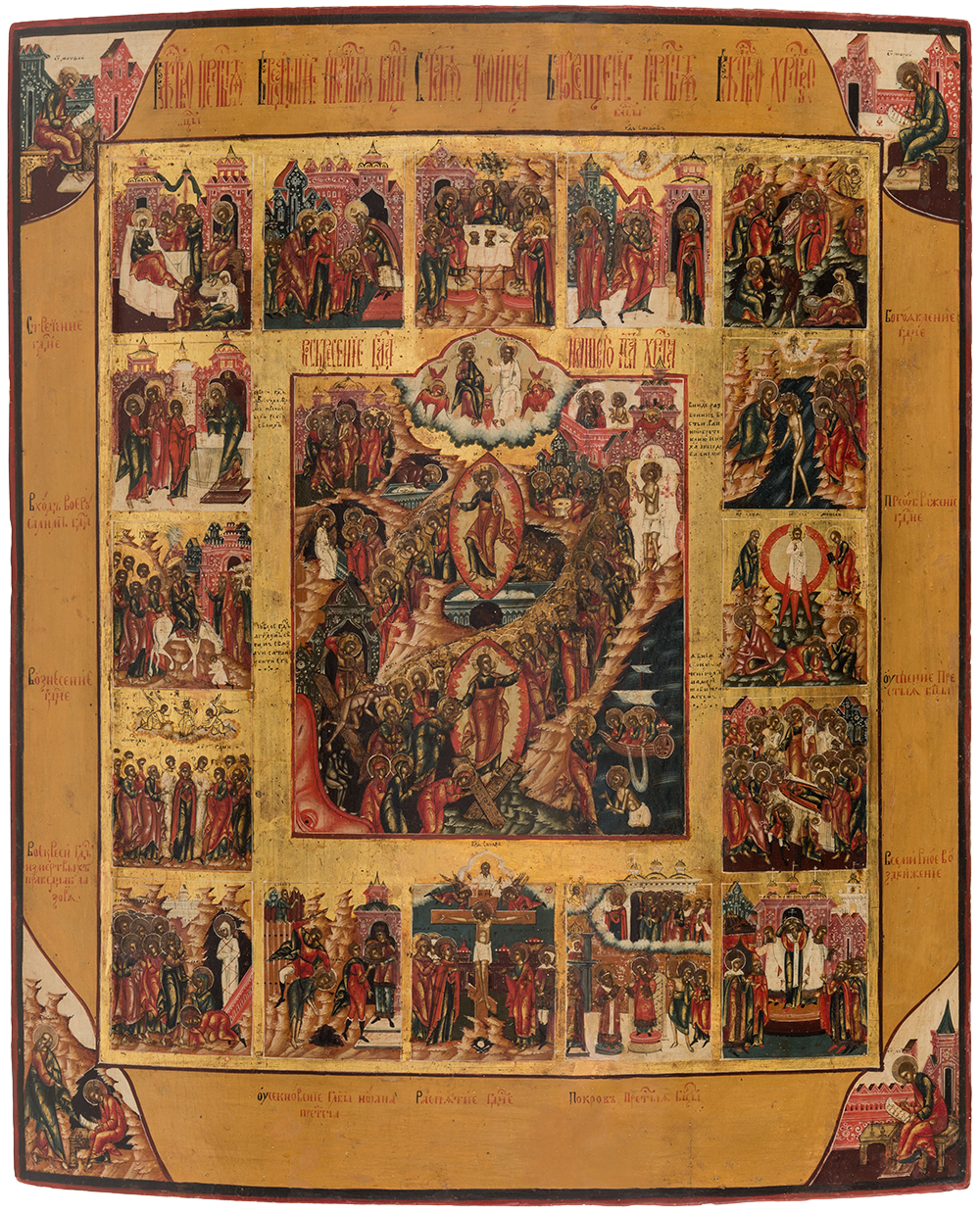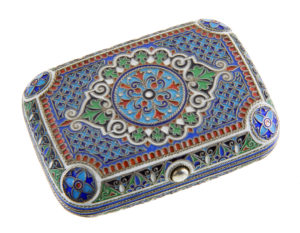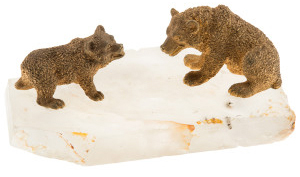
Do You Own Russian Antiques?
Contact us to have one of our Russian specialists evaluate your rare Russian art, jewelry and antiques.
Over the centuries, Russian artists and artisans have created a wide variety of singularly beautiful paintings, sculptures, jewelry, and other decorative items. Today, these antiques and works of art delight people around the world—and many have become highly sought-after collectibles.
The market for Russian art and antiques includes everything from fine art and Imperial furniture to glassware, craftwork, and Soviet-era jewelry. Some of the most collectible items include icons, Russian silver, Russian enamel, bronzes, and paintings.

For many people, icons are among the first things that spring to mind when they think of Russian art and antiques—and with good reason. For more than 1,000 years, icons have played a significant role within the Russian Orthodox religion, both in churches and in homes. In fact, Russians see them as “the gospel in paint.” Traditionally, an Icon was a small painting, created with egg tempura on wood paneling that was sometimes covered in cloth. Oftentimes, gold or shellac-tinted silver leaf was used to depict halos and other details. Many icons were outfitted with decorative facades that were gilded with silver, bronze, or tin and were used to create depth. Originally, icons were painted in the conventional, non-realistic Byzantine style; however, after a division in the Russian Orthodox Church in the mid-17th century, a more modern movement emerged that incorporated a more Western, realistic style. As religious works that were frequently created by multiple artists, icons were rarely signed. However, one name that’s synonymous with early icons is Andrei Rublev, a 14th century artist whose works include The Old Testament Trinity.
Russian artisans have long used silver to create jewelry and statuettes, as well as decorative flourishes for numerous items ranging from weapons to silverware. Silver jewelry from the Kievan Rus area (9th to 13th century) was highly intricate, involving techniques such as casting, embossing, and the application of niello. In the 18th and 19th centuries, silver was used to create silverware, cast-silver statues, and jewelry for the tsars and other high-ranking families. After the Russian revolution, silver remained a favorite material for jewelry makers, and what is now known as Soviet jewelry is still in high demand.

Russian enamel from the Tsarist era is sought-after for its exquisite craftsmanship. The technique used during this period is called cloisonné, which involves decorating metalwork (frequently silver) items with vitreous enamel and inlays of gemstones or glass. To decorate an item, gold or silver wires are first attached, dividing it into compartments. These compartments are subsequently filled in with enamel or other inlays, using colors to create images and patterns. What sets cloisonné apart from other styles of enameling is that the finished pieces show the different compartments and the wiring between them as a part of the decoration. One of the most well-known producers of Russian enamel was world-famous jewelry firm House of Fabergé, which was founded in 1842 and created the 50 famous Imperial Fabergé eggs—many using the cloisonné technique—for Tsars Alexander III and Nicholas II in the late 19th and early 20th century. Faberge eggs from the Imperial period are almost priceless. In 2015, the Third Imperial Easter Egg, which was thought to have been destroyed, was found and estimated to be worth $33 million.
Like many other countries, Russians have traditionally used bronze for many of their monumental statues. However, bronze was also a favorite material for non-monumental sculptural art, particularly during the 19th and early 20th centuries. Some of history’s most superb bronzes were created during this period, often depicting hunting scenes, military tableaus, or scenes from everyday life. Animals and nature were also popular themes, as were busts of members of the aristocracy. What’s particularly interesting is the fact that sculptures were often used to depict people of various ethnicities who lived within what was then the Russian Empire, such as Bashir riders, Georgian farmers, and Samoyed reindeer herders. Moreover, they also depicted people from other regions like the Middle East, Western Europe, and North Africa, as well as historical characters such as Rodin and Beethoven. They even featured fictional and mythical characters such as Don Quixote and Mephistopheles. Some of the most famous Russian sculptors of this era include Vasily Grachev and Yevgeny Yevgenyevich Lansere (also known as Eugene Lanceray). They were not only contemporaries, but also rivals whose ongoing competition incited them to create spectacular works. Sadly, after Lansere’s death in 1886, Grachev ceased modeling.
 Of course, Russia is also the birthplace of many acclaimed painters. One of the most well-known is Wassily Wassilyevich Kandinsky, whose untitled first abstract watercolor is generally considered to be one of the first purely abstract paintings. In 2012, his “Study for Improvisation 8” was sold for $23 million at Christie’s. Aleksander Mikhailovich Rodchenko, a versatile and prolific artist, was a founding member of the constructivism movement. He famously concluded his painting career by exhibiting three monochromes: one red, one yellow, and one blue canvas. Despite his decades-long career, Marc Chagall is perhaps best-known as a pioneer of modernism who used elements of symbolism, cubism, and surrealism in his works. Chagall’s “Anniversary” was sold for $16.3 million at Sotheby’s in 1990. Another acclaimed artist who’s still alive today, Oleg Nikolayevich Tselkov, is a nonconformist, primarily known for his brightly colored, emotionally-charged images of faces. His works are sold at auctions around the world for as much as $85,000.
Of course, Russia is also the birthplace of many acclaimed painters. One of the most well-known is Wassily Wassilyevich Kandinsky, whose untitled first abstract watercolor is generally considered to be one of the first purely abstract paintings. In 2012, his “Study for Improvisation 8” was sold for $23 million at Christie’s. Aleksander Mikhailovich Rodchenko, a versatile and prolific artist, was a founding member of the constructivism movement. He famously concluded his painting career by exhibiting three monochromes: one red, one yellow, and one blue canvas. Despite his decades-long career, Marc Chagall is perhaps best-known as a pioneer of modernism who used elements of symbolism, cubism, and surrealism in his works. Chagall’s “Anniversary” was sold for $16.3 million at Sotheby’s in 1990. Another acclaimed artist who’s still alive today, Oleg Nikolayevich Tselkov, is a nonconformist, primarily known for his brightly colored, emotionally-charged images of faces. His works are sold at auctions around the world for as much as $85,000.
Syl-Lee Antiques’ Russian Antiques and Art Experts Come to You
For more than 40 years, Syl-Lee Antiques has been synonymous with expertise in Russian arts and antiques—as well as transparency, compassion, and discretion when appraising and buying items. We understand that parting with your prized possessions can be deeply upsetting. That is why we offer our customers the courtesy of having our Russian art and antiques experts come to your home for an in-home appraisal—without there being any obligation for you to sell. We take the time to give you an expert opinion, and if you decide to sell, we pay in cash right there and guide you through the process of transferal of ownership.
Although we’re located in New York City, we’re willing to travel in order to acquire highly sought-after items. Contact us for more information.
Доступен русскоязычный эксперт
